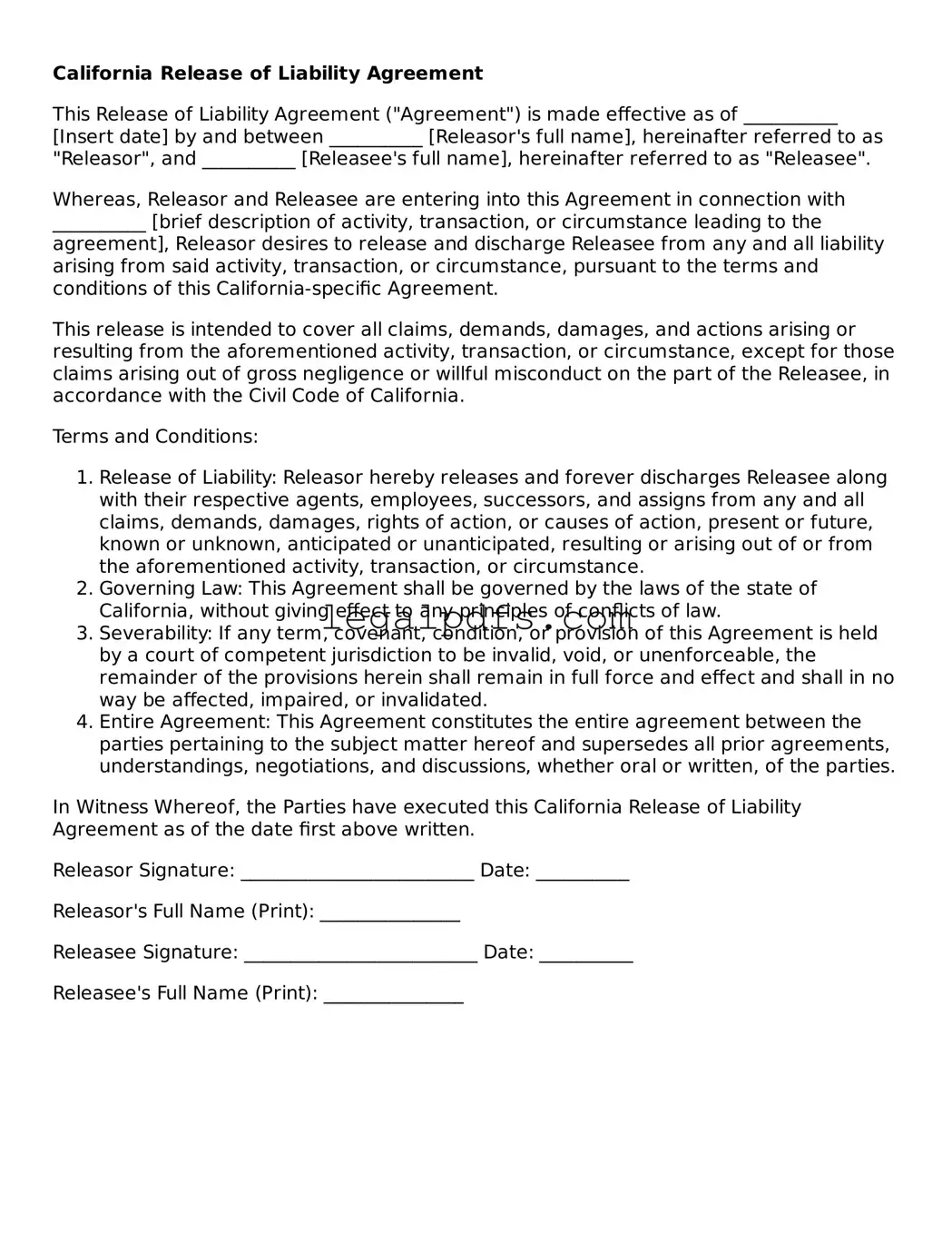What is a California Release of Liability form?
A California Release of Liability form, also known as a Notice of Transfer and Release of Liability (NRL), is a document that lets the California Department of Motor Vehicles (DMV) know that you have sold or transferred the ownership of a vehicle. This form is crucial because it releases you from legal responsibility for any incidents involving the vehicle once it’s transferred to a new owner.
When should I submit a California Release of Liability form?
You should submit the California Release of Liability form within 5 days of the vehicle's sale or transfer. This timely submission is important in protecting yourself from any liability for what the new owner does with the vehicle.
How can I submit the California Release of Liability form?
The form can be submitted to the DMV either online through the DMV’s official website or by mailing a completed Release of Liability form to the address provided by the DMV. Online submission is generally faster and more convenient.
What information do I need to complete the form?
To complete the California Release of Liability form, you need the vehicle’s license plate number, the date of sale or transfer, the odometer reading at the time of sale (for vehicles less than 10 years old), and the name and address of the person who acquired the vehicle.
Is there a fee to submit the California Release of Liability form?
No, there is no fee to submit the Release of Liability form. It is a free notification service provided by the DMV to help update their records regarding the vehicle's ownership.
What happens after I submit the form?
After you submit the form, the DMV updates its records to show that you have released liability for the vehicle. You will be cleared from responsibility for any violations or incidents involving the vehicle that occur after the date of sale.
Can the Release of Liability form be submitted for a leased vehicle?
Yes, the Release of Liability form can and should be submitted if you’re transferring a leased vehicle. However, it's important to also notify the leasing company of the transfer and follow their procedures.
What if I make a mistake on the form?
If you make a mistake on the form, you should correct it by submitting a new Release of Liability form with the correct information. Make sure to clearly indicate that the new submission is correcting a previously submitted form.
Will I receive confirmation after submitting the form?
Yes, if you submit the form online, you will receive immediate confirmation of your submission. If you mail the form, you can request a return receipt or tracking to confirm the DMV has received it. However, the DMV does not send confirmation of processing the Release of Liability for mailed submissions.
